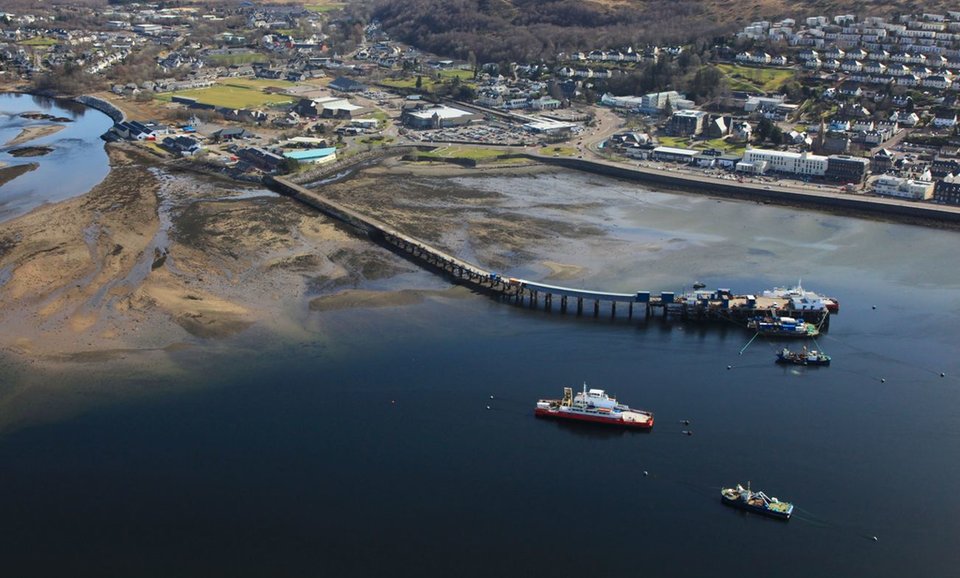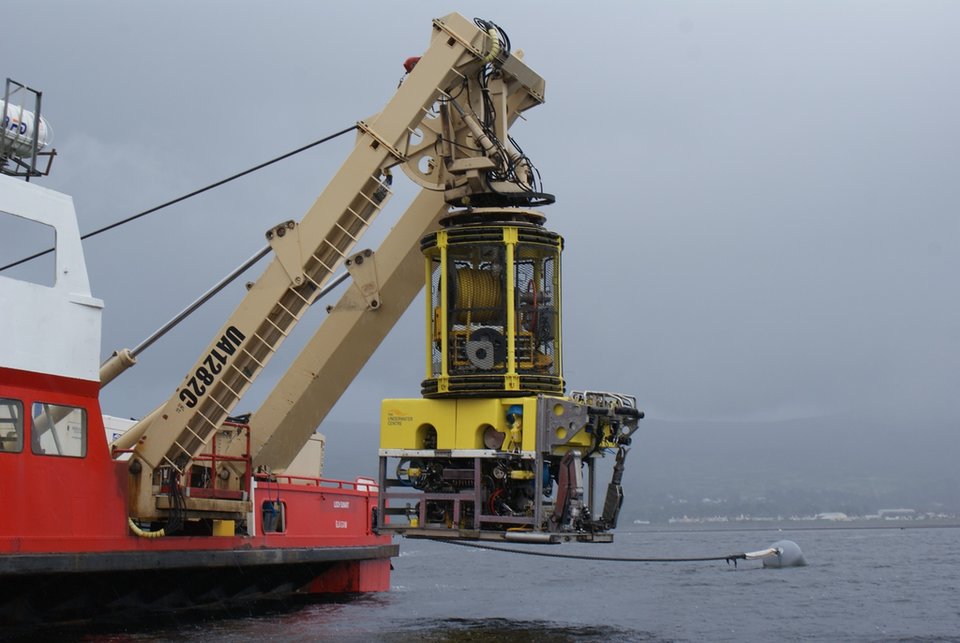Training
Subsea training and testing at the Underwater Centre
Dr Gareth Evans takes a look inside the Underwater Centre at Fort William, one of the world's most advanced subsea testing and training facilities.
Billed as “the most realistic subsea training and testing facility in the world,” the Underwater Centre at Fort William boasts its own sheltered, multiple-depth seawater dive site, a private pier complex, a 1.5 million litre indoor seawater dive tank and full residential accommodation. Based on the banks of Loch Linnhe, a tidal sea loch at the southern end of Scotland’s Great Glen, and run by a team of highly-skilled and experienced instructors and training staff, the centre enjoys an enviable reputation for training commercial divers and ROV operators, and as a venue for large-scale sea trials,
First established by the British Government back in the early 1970s as a subsea testing and trials facility, the Underwater Centre subsequently developed into a commercial diving school to help improve safety and competency in the then newly booming offshore industry. More than 40 years later, as a private company, it now offers a range of internationally recognised HSE commercial diving and ROV pilot technician training courses, with the strong emphasis throughout on realism. As a spokesperson for the centre puts it, “we ensure that delegates who attend our training courses are trained beyond just the requirements of the ticket, we train them for the job they will be doing once they leave the centre”.
To achieve that, the courses are designed to provide a balance of theoretical training, delivered by highly experienced instructors, with practice sessions where delegates can gain the skills needed for their role, and then develop them in a safe, controlled environment. “We deliver training to incorporate theory-based training and assessments, as well as practical tasks on the surface and underwater to fully test the candidates’ knowledge and, above all, making absolutely sure they are leaving our centre as safe as possible,” the spokesperson explains.
In addition, because commercial divers and ROVs routinely work together to complete tasks in the subsea industry, trainees on both courses are given this exposure during their training. “They can get to grips with the protocols and, essentially, become accustomed to working in the water with other subsea technology, including ROVs that are being piloted from the surface,” the spokesperson says.
“With an average depth of four metres, the 30m by 20m tank continues the centre’s emphasis on maximising realism with the inclusion of a number of seabed features.”

The Underwater Centre at Fort Williams
A controlled environment for ROV subsea training
The centre is highly self-contained with its lecture rooms, dive sites, testing sites, accommodation and restaurant area all based in the same complex.
The centrepiece of the onshore training facility, located at the head of the centre’s private pier, is a 1.5 million litre seawater tank, which offers a controlled underwater environment for diver and ROV subsea training. With an average depth of four metres, the 30m by 20m tank continues the centre’s emphasis on maximising realism with the inclusion of a number of seabed features, allowing students to gain useful practice before moving on to more challenging surroundings.
Equipped with large acrylic viewing panels, a surface supplied and scuba entry pool, vehicle access and full surface supplied diving and enriched air nitrox spread, the tank is an extremely versatile facility for a large range of subsea training and underwater equipment testing operations.
The complex is also home to the centre’s ROV and underwater inspection section, with additional classrooms and mechanical and electrical workshops to give students on the ROV courses additional real-world knowledge and experience of the kind of work-class vehicles they will encounter on the job.
“The purpose-built subsea dive site in the loch offers a range of structures, depths, visibilities and currents.”

ROV training at the Underwater Centre
Loch access for realistic training scenarios
Bridging the gap, quite literally, between the onshore facilities and the subsea site, is a 500m private pier, which provides numerous dive stations and accommodates a decompression chamber, classrooms, drying rooms, offices, ROV launch and recovery systems and control cabins, welding bays, an equipment store and workshop space. The pier has been substantially developed over recent years and is now equipped with everything necessary to train commercial divers and ROV operators, as well as to conduct large-scale sea trials, in a realistic working environment, even down to the use of offshore health and safety rules.
The purpose-built subsea dive site in the loch offers a range of structures, depths, visibilities and currents, and its sheltered location means that it can be used almost all year round. It is set up to cater for all the students, whether taking ROV, air or saturation diving courses, and features a mock up-of an oil rig’s leg structure, underwater welding bays, sections of concrete-clad pipeline as well as numerous wrecks and sunken army vehicles, sited in about 20m of water just off the pier.
From here, the loch then drops to more than 100m within a mile and a half, making greater depths easily accessible via the centre’s range of support vessels, which include two moon-pool barges – one of which is equipped with a decompression chamber – a wet bell diving system, a saturation diving system barge, an ROV support vessel, fast rescue craft and a tug. All of this, coupled with its naturally varied seabed geology, the site is ideal both as a challenging open-water training environment and for subsea trials of new equipment and processes.
“The centre is also working closely with ConocoPhillips to develop a new oxy-arc underwater cutting course.”
Beyond training: a site for subsea trials
Having been initially set up as a testing facility, the centre now has over 40 years’ experience in subsea trials, and a history of assisting companies from many different sectors, including the military, oil and gas industry, universities and communications sectors to test a wide range of technologies.
Their client list reads like something of a ‘who’s who’, including James Fisher & Sons’s NATO Submarine Rescue System training, Tekmar Energy’s wind farm technology trials and DOF Subsea’s underwater survey technology demonstration. The centre is also working closely with ConocoPhillips to develop a new oxy-arc underwater cutting course.
With offshore wind, tidal and ocean current energy installations widely tipped for significant expansion, and extensive North Sea decommissioning work on the horizon, the future demand for these services seems pretty assured. A number of companies have booked slots to test new subsea technology, and the response to the 2018 training calendar has already been good, which is hardly surprising, given the consistent need for subsea personnel identified in Oil & Gas UK’s Economic Report 2017, and the centre’s unique position in the market.
“The Underwater Centre is the only training school in the world to deliver all levels of HSE commercial diver training, from SCUBA right up to closed bell training,” says the spokesperson. “As such, there will always be a demand for our training courses [and] the centre will continue to work closely with the subsea industry to ensure our training continues to meet industry needs, therefore continuing to ensure our candidates are as well-prepared as possible for their future careers.”